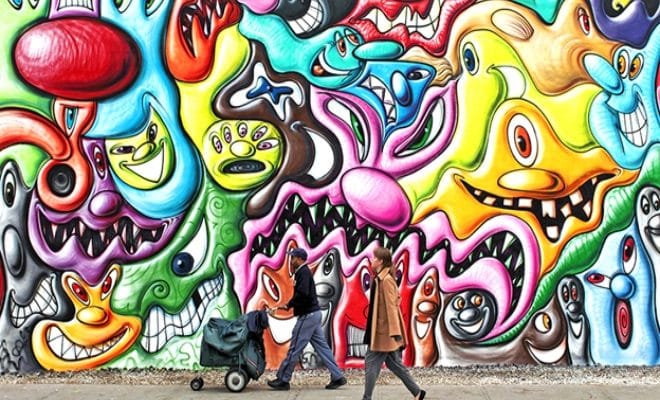Meaning, Creation, and Significance the Art of Graffiti – Graffiti, a form of artistic expression that adorns urban landscapes with vibrant and captivating visuals, has captured the attention of art enthusiasts, cultural critics, and the public alike. This article delves into the world of graffiti art, exploring its meaning, origins, creative process, and the underlying reasons for its enduring appeal.
Understanding Graffiti Art
Graffiti art is a visual medium that involves creating intricate and colorful designs, images, and lettering on various surfaces, often in public spaces. It is characterized by its boldness, creativity, and the ability to convey powerful messages through visual language. Graffiti artists employ a range of techniques and materials, transcending traditional artistic boundaries and embracing a unique form of self-expression. nexus slot
Origins and Terminology
The term “graffiti” originates from the Italian word “graffiare,” which means “to scratch.” Historically, graffiti art was associated with inscriptions and drawings carved onto ancient buildings and structures. However, the modern concept of graffiti art gained prominence in the 1960s and 1970s, particularly in urban environments such as New York City. It was during this era that graffiti artists began using spray paint to create elaborate murals and lettering on walls, trains, and other surfaces. https://hari88.com/

Creating Graffiti Art
Graffiti art is crafted through a multi-step process that requires creativity, skill, and precision:
- Conceptualization: Artists conceive ideas and themes that reflect their artistic vision or convey social, cultural, or political messages.
- Design and Sketching: Artists create preliminary sketches to plan the layout, composition, and arrangement of elements.
- Selection of Colors and Materials: The choice of colors and spray paint brands plays a crucial role in the vibrancy and longevity of the artwork.
- Execution: Using spray paint cans, artists translate their sketches onto the chosen surface, layering colors and employing techniques like shading, fading, and highlighting.
- Detailing and Outlining: Adding details, fine lines, and outlines enhances the depth and visual impact of the artwork.
- Finishing Touches: After the primary design is completed, artists may add finishing touches, such as additional elements, effects, or signatures.
The Significance of Graffiti
Graffiti art holds various significances, making it a unique and impactful form of creative expression:
- Social Commentary: Graffiti often serves as a platform for social commentary, addressing issues such as inequality, politics, and urban life.
- Cultural Identity: Graffiti can reflect the cultural identity and heritage of a community, celebrating diversity and traditions.
- Activism: Many graffiti artists use their work to raise awareness about environmental issues, human rights, and other causes.
- Beautification: In some cases, graffiti art transforms neglected spaces into visually appealing areas, contributing to urban beautification.
- Freedom of Expression: Graffiti provides individuals with a canvas for self-expression and a voice in public spaces.
Conclusion
Graffiti art stands as a dynamic and vibrant mode of expression that merges creativity with social commentary. It transcends traditional artistic boundaries and captivates audiences with its visual complexity, bold colors, and intricate designs.
From its origins as a form of urban rebellion to its current recognition as a legitimate art form, graffiti continues to evolve and influence artistic landscapes around the world. Through its bold strokes and captivating imagery, graffiti art remains a testament to the power of creativity and the ability to make impactful statements in the public eye.